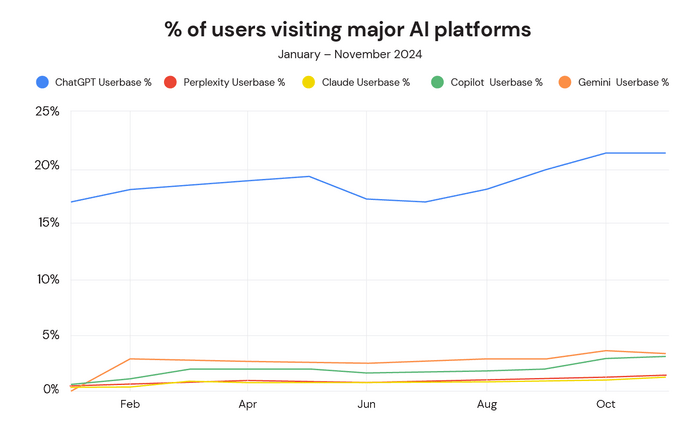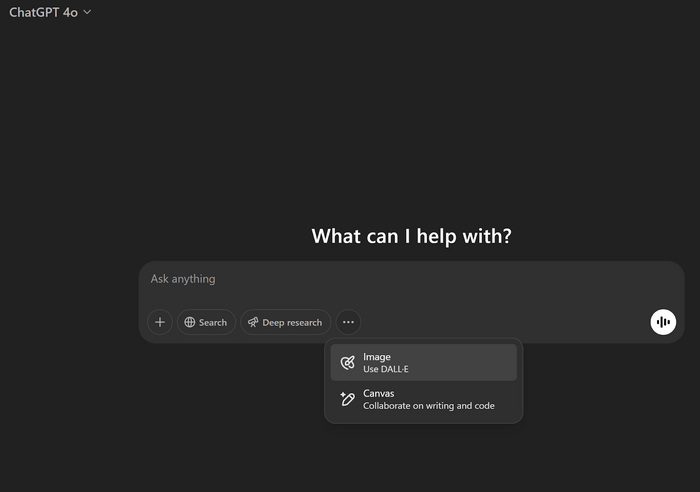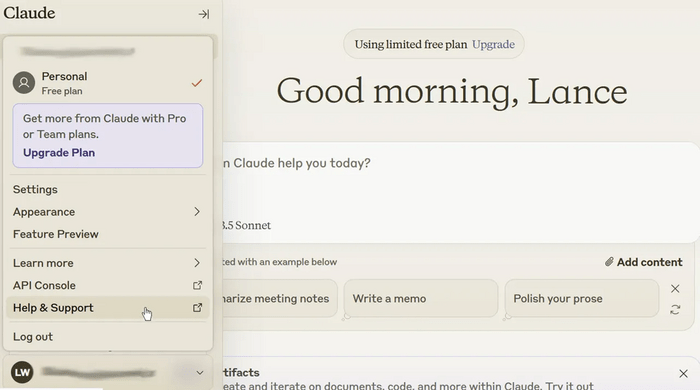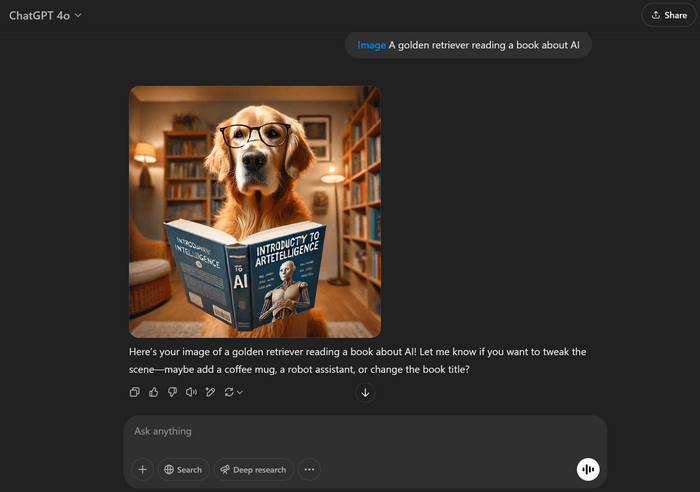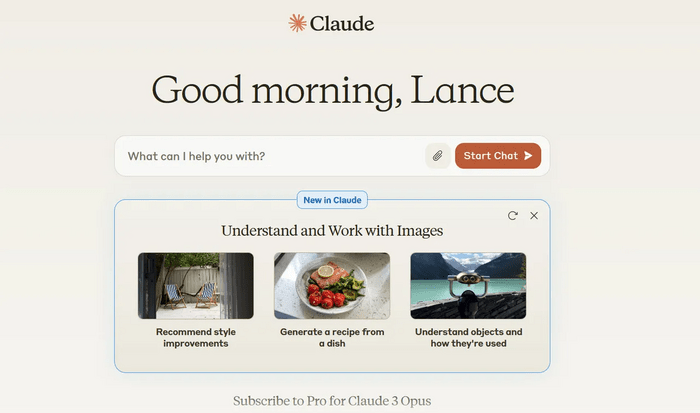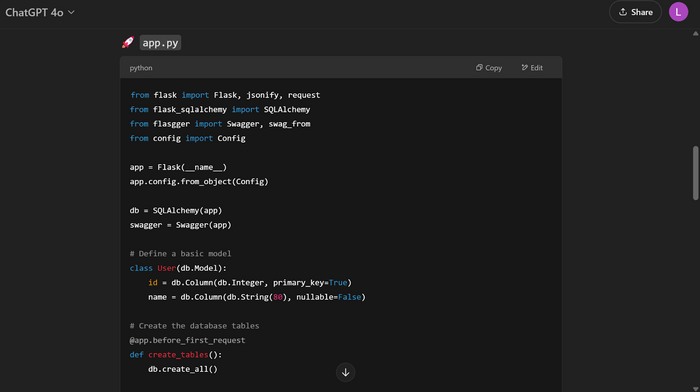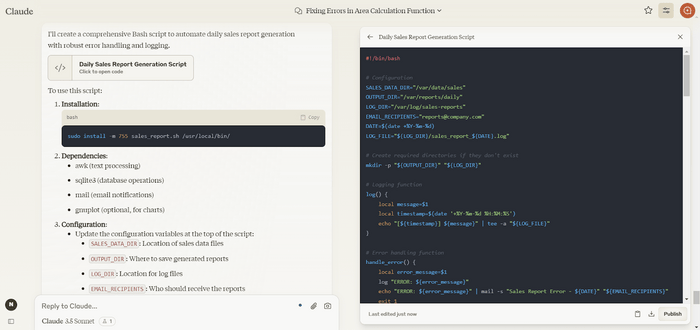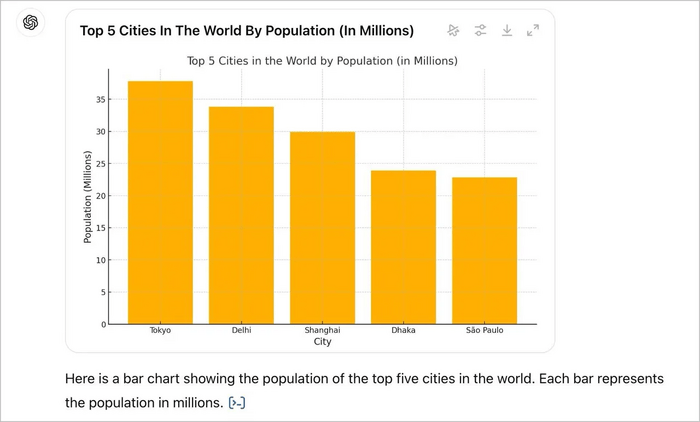Claude vs ChatGPT: Which AI Model is Better in 2025?

You’ve probably seen the charts—ChatGPT leads the AI race in popularity by a massive margin. In fact, according to Datos research, ChatGPT gets over 10 times more traffic than Claude.
But that raises an interesting question:
Is ChatGPT actually better, or has it simply been around longer and gained more momentum?
In this guide, we’ll compare Anthropic’s Claude and OpenAI’s ChatGPT side by side—based on usability, performance, creativity, coding, data analysis, and more. Let’s find out which one suits your needs best.
Quick comparison: ChatGPT vs Claude
To save you time, here’s a quick side-by-side table that highlights the core differences:
|
|
|
|
|
|
|
|
|
|
|
|
|
|
|
|
|
|
|
|
|
|
|
|
|
|
|
|
|
|
|
|
|
|
|
|
|
|
|
|
|
|
|
|
|
|
|
|
Want to know why these differences matter? Let’s dig deeper.
3. What is ChatGPT?
ChatGPT is OpenAI’s conversational AI, first launched in November 2022. It became the fastest-growing consumer app in history, reaching 100 million users in under 2 months—a milestone that outpaced even TikTok and Instagram. Built on the GPT (Generative Pre-trained Transformer) architecture, it evolved from GPT-3.5 to GPT-4, and now GPT-4 Turbo, which powers ChatGPT Plus (the $20/month version).
Key moments:
- Nov 2022: ChatGPT launches with GPT-3.5
- March 2023: GPT-4 released
- Nov 2023: GPT-4 Turbo launched
- Dec 2023: Custom GPTs and memory features introduced
- July 2024: SearchGPT released
- August 2024: ChatGPT reacjes 200 million weekly active users
- September 2024: OpenAI unveiled the GPT o1 model
OpenAI also powers Microsoft’s Copilot tools (in Word, Excel, GitHub, and Teams), massively expanding its presence in everyday productivity apps. This tight integration into the Microsoft ecosystem has helped OpenAI reach over 100 million weekly users, making GPT-based tools part of the modern workplace.
What makes ChatGPT stand out is its flexibility. With the introduction of Custom GPTs, users can create tailored assistants for niche use cases—like resume writers, coding tutors, legal assistants, or even Dungeon Masters. OpenAI has also implemented a memory feature, which allows ChatGPT to remember user preferences over time, offering a more personalized and contextual interaction.
Another lesser-known fact is that GPT-4 Turbo was trained with a cutoff of December 2023, making it one of the most up-to-date AI models as of early 2025. Despite not being connected to the internet in real-time (unless plugins are enabled), its training data makes it incredibly capable for general tasks, and it can often simulate up-to-date knowledge quite convincingly.
4. What is Claude?
Claude is Anthropic’s AI assistant, named after Claude Shannon, the legendary mathematician often referred to as the father of information theory. It debuted in March 2023, positioning itself as a safer, more ethically grounded alternative to other AI chatbots. Built with a strong focus on alignment, reliability, and user intent, Claude has carved out a reputation for being thoughtful, measured, and particularly adept at handling large, complex inputs.
In March 2024, Anthropic released the Claude 3 family of models:
- Claude 3 Haiku – the fastest and most cost-efficient, ideal for basic tasks
- Claude 3 Sonnet – the balanced, general-purpose model
- Claude 3 Opus – the flagship, most capable model, rivaling GPT-4 Turbo in many benchmarks
What makes Claude especially unique is its use of “Constitutional AI”—a methodology where the AI is trained to follow a set of values and guidelines, allowing it to self-correct in real time. This makes Claude less likely to generate harmful, biased, or misleading outputs. Instead of simply obeying user prompts, Claude is more likely to reflect on its responses and “push back” gently when asked to do something risky or unethical.
Another major differentiator is Claude’s incredible context window—up to 200,000 tokens, or roughly 500 pages of text. That’s nearly double what GPT-4 Turbo can handle. This makes Claude ideal for tasks like analyzing legal documents, academic papers, books, or entire codebases. It’s already being used in legal tech, research firms, and content-heavy industries where long-form reasoning is essential.
While it may be slightly more cautious and less assertive than ChatGPT, Claude’s strength lies in deep reasoning, long-term consistency, and a calmer tone—qualities that make it feel less like a flashy assistant and more like a thoughtful research partner.
5. Ease of use
When it comes to AI tools, ease of use is often the deciding factor—especially for people who aren’t developers or tech-savvy power users. A tool can be incredibly powerful, but if the interface is clunky or confusing, most users will simply give up. Fortunately, both ChatGPT and Claude have worked hard to create smooth, user-friendly experiences—but they shine in different ways.
Let’s break down what using each one feels like.
ChatGPT: flexible & feature-rich
ChatGPT offers a sleek, interactive experience that balances simplicity with powerful features.
- Clean, intuitive UI – Easy for beginners, with helpful onboarding tips.
- Custom GPTs (no-code bots) – Create tailored AI assistants for specific tasks like writing emails, tutoring math, or analyzing resumes.
- Available on web and mobile – Fully functional mobile apps for iOS and Android.
- Memory feature – Learns and remembers preferences like your name, tone, or recurring tasks (for Pro users).
- Plugin and tool ecosystem – Access browsing, code interpreter, PDF reader, and more via built-in tools.
- Multilingual interface – Supports a wide range of languages for global users.
Example use case
Claude: minimalist & document-friendly
Claude takes a more streamlined and focused approach, which many users love for reading and reasoning-heavy tasks.
- Simple, distraction-free design – Prioritizes the chat window, perfect for long-form thinking.
- Smooth file uploads – Easily processes long documents (PDFs, Word files, etc.) with little lag.
- Handles large context better – Excellent at maintaining continuity in long conversations or analyzing 100+ page documents.
- No login needed (in some apps) – Accessible in tools like Poe without account creation.
- Ethical, calm tone – Designed to give thoughtful, careful responses.
Example use case
Verdict
- Choose ChatGPT if you want customization, plugin support, and a versatile toolkit that adapts to many use cases.
- Go with Claude if you prefer a clean interface, excellent long-document handling, and a calm, thoughtful assistant.
In short: ChatGPT is a feature powerhouse, while Claude is the minimalist genius—both easy to use, but for very different reasons.
6. Performance
Performance is one of the most critical aspects of any AI model. It affects how fast, how accurately, and how reliably the tool can complete a task—whether you're generating code, analyzing a report, or writing a blog post. While both ChatGPT and Claude are capable, their performance strengths lie in different use cases, based on underlying architecture, training data, and how they manage context.
Let’s break down what “performance” really means in the context of AI chatbots—and how these two models compare.
ChatGPT: fast, responsive, and widely reliable
ChatGPT (especially GPT-4 Turbo) has been optimized for speed and cost-efficiency. It can generate long responses within seconds, maintain continuity in multi-turn conversations, and respond with a level of confidence that feels human-like—sometimes a little too confident.
- GPT-4 Turbo is faster than GPT-4, yet offers comparable reasoning capabilities at a fraction of the cost (for API users).
- Built for low latency, it performs consistently well even under heavy traffic.
- Rarely crashes or times out, thanks to OpenAI’s robust infrastructure.
- Supports up to 128K tokens (around 300 pages), but accuracy may drop when handling complex, lengthy documents.
Fun fact
Claude: accurate, context-aware, and thoughtful
Claude 3 Opus has been quietly dominating AI benchmarks—showing top-tier performance in areas like reading comprehension, factual accuracy, and nuanced reasoning.
- Claude 3 Opus scored 87.7% on MMLU (Massive Multitask Language Understanding)—one of the highest scores of any public model as of early 2025.
- Supports up to 200,000 tokens—roughly 500 pages of text, allowing for deep, multi-document analysis in a single session.
- Excels in handling context over long conversations, with fewer lapses in memory or logic.
- May respond more slowly on massive queries compared to ChatGPT, but often provides more grounded and precise answers.
- Can be overly cautious at times, especially on sensitive or subjective questions, due to its alignment-focused training.
Example
Benchmark comparison snapshot:
|
|
|
|
|
|
|
|
|
|
|
|
|
|
|
|
|
|
|
|
|
|
|
|
|
|
|
|
Verdict
- Use ChatGPT if you value speed, responsiveness, and broad-task consistency—especially for creative writing, quick answers, and mixed media interactions.
- Choose Claude if you need high accuracy, deeper reasoning, or long-document performance without sacrificing context.
In short, ChatGPT is like a fast-talking multitasker, while Claude is more like a careful, detail-oriented analyst. Depending on your needs, either could outperform the other—and in many cases, using both in parallel yields the best results.
7. Creative work
AI has come a long way from just answering questions—today, it's also a creative partner, helping writers, marketers, designers, and entrepreneurs brainstorm ideas, write stories, and polish content. But not all AI models "think" creatively in the same way. Some are more imaginative and expressive, while others are more structured and formal.
When it comes to creative work, both ChatGPT and Claude have their strengths—but they cater to different types of creativity.
ChatGPT: imaginative, bold, and marketing-savvy
ChatGPT feels like brainstorming with an excited, idea-rich teammate who’s always ready to pitch wild ideas or punchy headlines. Its language is expressive and engaging, which makes it a favorite among marketers, fiction writers, and content creators.
- Great for storytelling – Can generate compelling narratives, vivid scenes, and believable dialogue.
- Excellent at branding and copywriting – Produces catchy product names, slogans, ad copy, and email subject lines.
- Confident tone – Often sounds enthusiastic and persuasive, which is perfect for high-energy content.
- Quick with creative prompts – Can riff on user ideas and spin up 10 variations in seconds.
- Understands tone – Easily switches between humorous, sarcastic, professional, or poetic.
Example use cases
-
A startup founder asks ChatGPT to name their AI fashion app. It instantly pitches ideas like “StyleMind,” “Wardrobe Wizard,” and “ChicCode”, each with branding suggestions and mock taglines like “Fashion meets future.”
- A novelist uses ChatGPT to develop a fantasy world, complete with characters, magic systems, political factions, and a 3-act plot outline in under 10 minutes.
Claude: structured, thoughtful, and elegant
Claude, on the other hand, takes a more refined and thoughtful approach to creativity. Its output is clean, organized, and well-articulated—making it ideal for essays, research papers, long-form articles, or anything that needs a more formal tone.
- Excellent for structured content – Think white papers, policy drafts, philosophical essays, or detailed reports.
- Polished style – Often more grammatically precise and logically coherent.
- Handles nuanced or sensitive topics with care, making it suitable for writing about ethics, social issues, or mental health.
- Ideal for academic writing – It can cite sources (if provided), format in MLA/APA, and write with clarity and professionalism.
Example use cases
-
A grad student asks Claude to help write an introduction to a philosophy paper on Nietzsche’s concept of the eternal recurrence. Claude delivers a 5-paragraph draft with thoughtful structure and well-reasoned transitions.
- A nonprofit uses Claude to write a grant proposal. It structures the objectives, explains the impact, and presents the mission statement with clarity and professionalism—without sounding overly promotional.
Comparison snapshot:
|
|
|
|
|
|
|
|
|
|
|
|
|
|
|
|
|
|
|
|
|
|
|
|
|
|
|
|
Verdict
- Use ChatGPT if you want bold ideas, vibrant storytelling, or copy that grabs attention. It’s like having an enthusiastic creative director in your pocket.
- Use Claude if you need clear, structured, and mature writing, especially for academic, formal, or professional projects.
In short: ChatGPT excels in wild ideas and marketing punch, while Claude shines in clarity, structure, and thoughtfulness. If you need to blend both styles, using them together can be surprisingly effective—draft in Claude, polish in ChatGPT, or vice versa.
8. Images and videos
Modern AI isn’t just about words anymore—we’re now in the era of multimodal AI, where tools can analyze images, describe what they see, generate visual content, and even interpret videos. This capability opens up powerful new workflows for designers, researchers, marketers, and everyday users.
When comparing ChatGPT and Claude in this space, we see clear differences in visual capabilities—especially in image generation and creative visual tasks.
ChatGPT: visual creation and interpretation powerhouse
ChatGPT (especially the GPT-4 Turbo version available with Pro) has robust multimodal capabilities, giving users access to both image understanding and generation.
- Supports image uploads – You can upload screenshots, diagrams, charts, or even photos, and ask ChatGPT to explain, analyze, or troubleshoot what it sees.
- Integrates with DALL·E 3 – This allows for detailed AI image generation based on user prompts, with impressive results for things like concept art, logos, characters, or ad visuals.
- Can edit generated images using natural language (“make the background blue,” “add a sunset,” etc.).
- Performs well on visual reasoning tasks—explaining infographics, flowcharts, or UI wireframes.
- Video understanding is under development, and expected to roll out in future updates.
Example use cases
- A social media manager asks ChatGPT to generate 3 different Instagram post designs for a spring fashion campaign. It produces image prompts using DALL·E and even suggests matching captions and hashtags.
- A teacher uploads a student’s handwritten math homework, and ChatGPT walks through where the student went wrong, step by step.
Claude: clear image understanding, but no generation (yet)
With the release of Claude 3, Anthropic introduced image input capability for the first time. While it's not as flashy as ChatGPT’s DALL·E integration, Claude excels at understanding and reasoning over images—especially diagrams, technical visuals, or charts.
- Supports image inputs – You can upload pictures, charts, or figures and ask Claude to interpret them.
- Particularly strong with line drawings, scientific diagrams, and structured visuals (e.g., circuit boards, Venn diagrams, org charts).
- Does not currently support image generation or video interpretation.
- Claude tends to give more measured, accurate descriptions, especially for factual visual content.
Example use cases
- A biology student uploads a complex cell diagram, and Claude labels each part, explains the function of organelles, and summarizes the process of mitosis with excellent clarity.
- A business analyst pastes a multi-series bar chart from a report, and Claude generates a concise summary of the key insights, pointing out trends and anomalies.
Comparison snapshot:
|
|
|
|
|
|
|
|
|
|
|
|
|
|
|
|
|
|
|
|
|
|
|
|
|
|
|
|
Verdict
- Use ChatGPT if you want to generate, modify, or creatively use images in your workflow. It’s ideal for marketers, designers, and content creators.
- Use Claude if you want to analyze diagrams, understand visuals, or extract meaning from structured images with precision.
In short: ChatGPT is your visual imagination tool, while Claude is your visual explainer. As AI continues to evolve, these multimodal abilities will only become more powerful—so it’s worth keeping an eye on updates from both.
9. Coding and testing
One of the biggest breakthroughs in generative AI has been its ability to write, understand, and debug code. Whether you're a beginner learning to program or an experienced engineer looking to speed up workflows, AI assistants can help explain concepts, write functions, and even suggest full applications.
Both ChatGPT and Claude are capable coders, but they approach coding tasks very differently. If you're working on serious development projects, the difference between "good enough" and "production-ready" matters a lot.
ChatGPT: developer’s best friend
ChatGPT, especially when powered by GPT-4 Turbo, is widely considered one of the best AI tools for coding available today. It can help across the full software development cycle—from writing boilerplate to advanced debugging and test generation.
- Supports multiple programming languages – Python, JavaScript, C++, Go, Rust, TypeScript, HTML/CSS, SQL, and more.
- Excellent at live coding assistance – You can build full apps, ask for real-time help with errors, or refactor code with context.
- Strong with debugging and test writing – Suggests unit tests, test suites, and mocks for frameworks like Jest, PyTest, or Mocha.
- Integrates with GitHub Copilot – Many devs now use GPT-based Copilot directly in VS Code and other IDEs.
- Understands APIs, database schemas, and architectural patterns with ease.
Example use cases
- A full-stack developer asks ChatGPT to help build a basic Flask API, hook it up to a PostgreSQL database, and add Swagger documentation. ChatGPT provides the full file structure, installation steps, and even Dockerfile setup—all in one conversation.
- A QA engineer uses ChatGPT to generate hundreds of edge-case test cases for a complex payment gateway, including code coverage suggestions.
Claude: great reasoner, weaker in execution
Claude is surprisingly good at explaining code, reasoning about logic, and helping with algorithm design or pseudocode generation. But when it comes to multi-file project scaffolding or real-world debugging, it falls short compared to ChatGPT.
- Strong at breaking down complex code and explaining it in plain English.
- Good with theoretical tasks like algorithm comparisons, sorting logic, or time complexity analysis.
- Can generate snippets in Python, JavaScript, and other languages—but often misses the surrounding project structure.
- Sometimes struggles with longer codebases, especially across multiple files or when maintaining global context.
- Better suited for education, documentation, and conceptual learning than building full apps.
Example use cases
- A student learning recursion asks Claude to explain how merge sort works in Python. Claude not only provides a clean implementation but also breaks it down step by step with visual examples.
- A product manager pastes in some legacy code and asks for a plain-language explanation of what it does. Claude gives a detailed, understandable summary, ideal for non-engineers.
Comparison snapshot:
|
|
|
|
|
|
|
|
|
|
|
|
|
|
|
|
|
|
|
|
|
|
|
|
|
|
|
|
|
|
|
|
Verdict
- Use ChatGPT if you're a developer, engineer, or tester working on production code, live projects, or devops automation. Its integration with tools like GitHub Copilot and its ability to follow complex code logic across multiple files make it ideal for daily coding tasks.
- Use Claude if you're learning to code, need help understanding algorithms, or want clean explanations without diving into detailed implementation.
To sum up, ChatGPT is your AI pair programmer, while Claude is your computer science tutor. Both are helpful—but only one is ready to ship code with you.
10. Data analysis & visualization
Data is everywhere—but making sense of it quickly is where AI can shine. Whether you're a data scientist, marketer, researcher, or business analyst, generative AI can help you clean, process, visualize, and interpret data far faster than traditional methods. But not all models are equally equipped for hands-on analysis.
Here, ChatGPT takes the lead as a practical data analysis tool, while Claude acts more like a strategic interpreter, helping you understand what the numbers mean in a broader context.
ChatGPT: a built-in data lab
ChatGPT Plus users (with GPT-4 Turbo) gain access to a powerful feature known as Advanced Data Analysis (formerly "Code Interpreter"). This turns ChatGPT into a mini data science environment that can write and run Python code, generate visualizations, and perform real-time analysis—all within the chat window.
- Can analyze CSVs, Excel files, and raw data by writing and executing Python code.
- Generates histograms, scatter plots, pie charts, bar graphs, and more using matplotlib and seaborn.
- Supports complex operations like data cleaning, merging datasets, statistical summaries, regression analysis, and clustering.
- Ideal for automated report generation, dashboards, or insight discovery from raw data.
- Extremely helpful for non-coders who want data insights without having to write a single line of code.
Example use cases
- A marketing team uploads a CSV with web traffic data and asks ChatGPT to identify which channels performed best over the last 6 months. The model cleans the data, builds time-series plots, and provides actionable insights—like bounce rate comparisons and seasonal trends.
- A small business owner asks ChatGPT to analyze their monthly sales figures and forecast the next quarter using a linear regression model. The chatbot runs the math, generates a prediction, and explains the limitations of the model.
Claude: insightful summaries, no code execution
Claude 3 models, especially Opus, are strong at understanding data contextually but lack the ability to run code or generate plots natively. However, Claude still offers value for users who need natural language summaries or want to extract meaning from structured tables and spreadsheets.
- Reads and understands CSVs and tabular data very well.
- Summarizes trends, highlights anomalies, and identifies outliers in plain English.
- Great for non-technical users or decision-makers who want quick insights, not code.
- Works well in tasks like reviewing exported reports, financial summaries, or survey results.
Example use cases
- A nonprofit uploads a donor database and asks Claude to summarize key donation patterns, average contribution sizes, and top-performing campaigns. Claude provides a clear breakdown without needing any code or formulas.
- A researcher pastes in survey results in tabular format, and Claude identifies recurring themes, statistical trends, and data reliability issues—all in narrative form.
Comparison snapshot:
|
|
|
|
|
|
|
|
|
|
|
|
|
|
|
|
|
|
|
|
|
|
|
|
|
|
|
|
|
|
|
|
Verdict
- Use ChatGPT if you need hands-on data analysis, visualizations, or code-based tasks. It’s like having a built-in data analyst who can code, chart, and explain in one place.
- Use Claude if you want to understand the meaning behind your data, summarize findings, or extract insights from structured reports and tables—without diving into code.
In short, ChatGPT is the data tool, while Claude is the data storyteller. One executes; the other interprets. Together, they offer complementary approaches to turning raw information into clear decisions.
11. Specialized features
Beyond the core capabilities like chatting, coding, or summarizing content, both ChatGPT and Claude offer unique features that set them apart. These specialized tools and design choices impact how users interact with the models and what kind of advanced tasks they can perform.
Whether you're looking for personal customization, deeper context retention, or ethically grounded responses, these features could be the deciding factor in your AI of choice.
ChatGPT: customization, tooling, and personalization
ChatGPT shines when it comes to building a tailored AI experience. OpenAI has invested heavily in making the model adaptable, extensible, and personal.
- Custom GPTs:
One of the most powerful features in ChatGPT Pro. Users can create their own specialized AI assistants—no coding required. You simply describe what you want, and the system builds a custom chatbot that follows your instructions, tone, and goals. Think: a GPT for customer support, another for writing recipes, and another for answering legal FAQs.
- Tool integrations (Pro version):
GPT-4 Turbo includes access to several integrated tools:
- Browser tool – Retrieves live data from the web.
- Python/Code Interpreter (Advanced Data Analysis) – Runs code for data analysis, simulations, and more.
- DALL·E – For generating and editing AI images.
- File upload & PDF tools – ChatGPT can read, summarize, and analyze file content directly.
- Browser tool – Retrieves live data from the web.
- Memory (for ChatGPT Pro users):
The memory feature lets ChatGPT remember user preferences, style choices, and recurring tasks across sessions. Over time, it learns how you like to be helped—whether that’s writing in a certain tone or remembering your business context.
Example use case
Claude: deep context, long memory, and ethical intelligence
Anthropic has focused Claude on trust, interpretability, and high-context comprehension. The result is a model that performs incredibly well in tasks that require depth, continuity, and thoughtful reflection.
- Massive context window (up to 200K tokens):
Claude 3 can ingest the equivalent of hundreds of pages in a single prompt. That means you can drop in full research papers, product manuals, or even a book chapter and ask Claude to work with it seamlessly—without breaking the thread or losing detail. - Superior long-doc processing:
Claude isn’t just storing more text—it understands and navigates it. You can ask Claude to:- Summarize long PDFs
- Compare two different chapters in a book
- Extract data from complex documents
- Track themes or inconsistencies across pages
- Constitutional AI (ethical guardrails):
Claude was trained using a framework called Constitutional AI, where the model was taught to follow a set of human-aligned principles. This gives it a tendency to respond more thoughtfully, push back on unsafe or unethical requests, and explain why it's making certain choices.
Example use case
Conclusion
Choosing between ChatGPT and Claude isn’t about which AI is universally “better”—it’s about which one fits your specific needs, style, and workflow. Each model brings powerful strengths to the table, and the right choice depends on what you're trying to accomplish.
ChatGPT is ideal if you’re looking for a highly interactive, customizable tool that excels in creative tasks, coding, data analysis, and multimodal workflows. It’s fast, flexible, and deeply integrated with a range of tools that boost productivity and creativity.
Claude, on the other hand, is a master of long-form reasoning, thoughtful explanations, and working with large volumes of information. If your work involves reading and interpreting documents, generating structured content, or analyzing complex material, Claude might feel more like a thoughtful research partner.
Both models continue to evolve rapidly. New features, improved reasoning, and smarter integrations are being rolled out all the time. That means today’s winner may not be tomorrow’s, and the best approach is to stay curious, stay informed, and don’t be afraid to test both tools side by side.
In the fast-moving world of AI, the most valuable skill is knowing how to choose the right tool for the job—and how to adapt as the landscape shifts.


